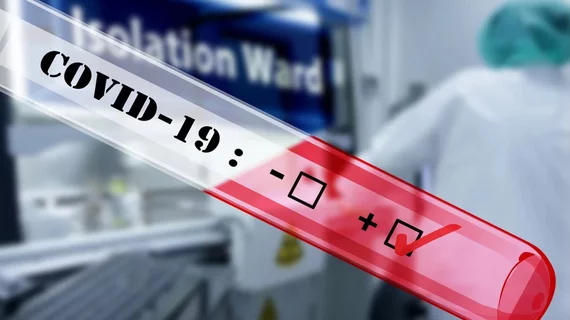When the management of COVID-19 patients presents significant challenges, advanced cardiac imaging techniques are often vital in determining the best course of action. But how can providers know which modality they should turn to first?
A new guidance from the American College of Cardiology’s Cardiovascular Imaging Leadership Council is designed to answer such questions. Published in the Journal of the American College of Cardiology, the document was developed by a panel of 13 specialists and includes dozens of pages of images, charts and in-depth analysis.
Differentiating between actual signs of a COVID-19 infection and standard cardiac complications can be difficult, the authors noted. As chest discomfort is one of the most common COVID-19 symptoms, this is something that will come up again and again for physicians.
A transthoracic echocardiogram, according to the guidance document, “is usually the initial cardiovascular imaging modality used to guide management.”
“This may be in the form of an urgent point-of-care ultrasound (POCUS) or a limited study initially,” wrote lead author Lawrence Rudski, MD, Jewish General Hospital in Montreal, Canada, and colleagues. “More complete studies are guided by the clinical question and evolving patient condition.”
When treating STEMI patients, however, catheterization is typically the clinician’s best option, though “less typical presentations of potential acute coronary syndrome may benefit from a POCUS and coronary CT angiography.” Cardiac MRI scans can also be useful in patients with myocardial infarction with nonobstructive coronary arteries.
Also, when COVID-19 patients are diagnosed with new LV dysfunction, the expert panel recommended follow-up echocardiograms or MRI scans two to six months after discharge.
The authors also highlighted how important it is to consider the well-being of healthcare workers.
“Decision to pursue additional imaging should be based on the assumption that the results will change patient management,” they wrote.
The full guidance document, which covers many more potential scenarios, is available as a PDF here.

